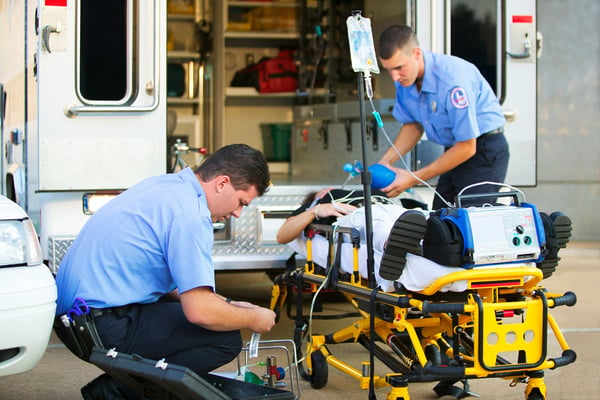
Respiratory assessment is a core component of every EMS professional’s job. Your experience has likely already taught you that factors such as age, exertion, and emotional state can affect a respiratory assessment. You may also realize that the respiratory assessment that neatly conforms to a textbook is a rare case indeed. Excellent respiratory assessments require a commitment to comprehensive care and a willingness to adapt based on new information and experiences. Here are five critical components of a skillful respiratory assessment.
Look and Listen
When you’ve performed dozens of respiratory assessments, it’s easy to simply go through the motions, working down a checklist or relying on an acronym. But the purpose of a respiratory assessment is to comprehensively assess the patient’s state—so don’t just formulaically assess the patient.
Look at the patient. What do you see? Are there obvious warning signs of an issue? Are there any indications that something else might be wrong? Then listen to the patient. Do they sound hoarse? Are they able to express themselves? Could they be experiencing a mental health episode that affects respiration?
Assessing patients should never be formulaic. Pause, look, and listen to take in as much information as possible.
Know That Norms Vary With Context and Other Factors
Using a single baseline for all patients is a recipe for inaccurate assessments, and could spell disaster. Though healthy adults take in 12-18 breaths per minute, infants and children breathe more rapidly. Older adults with respiratory disorders may likewise breathe more quickly.
It’s important to be mindful of how both context and individual factors can affect a respiratory assessment. For example:
- A person experiencing anxiety—as most people will be when facing a medical emergency—may breathe more rapidly, have higher blood pressure, or take in less oxygen.
- Neurological impairments such as dementia or brain injuries can make it more difficult for a patient to clear the airway.
- Mental health factors can affect respiratory and cardiac function. A person with an anxiety disorder may breathe irregularly during a moment of panic.
Remember that input from observers may not always be reliable. Teachers may not have accurate medical histories for their students. Police who call EMS for an arrestee may think the person is faking or be unable to provide complete information. When relying on details from observers, be mindful of how context can affect and undermine this information.
Take Your Time
Medical errors are the third leading cause of death, right behind heart disease and cancer in the United States. EMS professionals are just as likely to commit errors as any other medical provider. Distraction and rushing are common sources of these errors. Especially in emergency and tactical settings, providers may feel immense pressure to quickly assess a patient. But moving too fast can take an immense toll on patient welfare.
Don’t rush through the exam. If you need to redo a portion of the assessment or gather additional information, take the time to do it. Doing so may save a life.
Know What’s Normal for the Patient
If possible, gather information from the patient or from observers about recent medical history and medical quirks. For instance, some patients have naturally low blood pressure, so slightly elevated blood pressure may be more of a concern than it would be in other patients. Some questions to ask include:
- How have you felt lately?
- Is there anything unusual about your medical history I should know?
- Do you have any serious medical issues?
- What happened immediately before you called EMS?
- Do you have a history of breathing problems?
- Do breathing or cardiac problems run in your family?
Have the Right Equipment Ready
A respiratory assessment is only as good as the treatment you have available. If you can’t address what you uncover in a respiratory assessment, then you can’t fully and adequately treat your patients.
Having the right suction machine is critical when the patient’s respiratory system is at risk. Being able to quickly and safely clear the airway can save lives. Without a patent airway, additional treatment and assessment may be impossible. Your agency needs a suction machine that you can take to the patient so you won’t have to worry about transporting a patient experiencing respiratory issues.
For help choosing the right suction machine for your patient population, check out our free guide, The Ultimate Guide to Purchasing a Portable Emergency Suction Device.
Editor's Note: This blog was originally published in October 2018. It has been re-published with additional up-to-date content.













